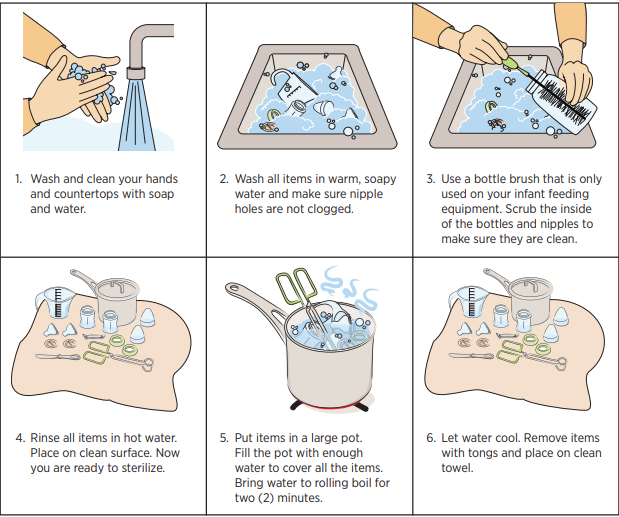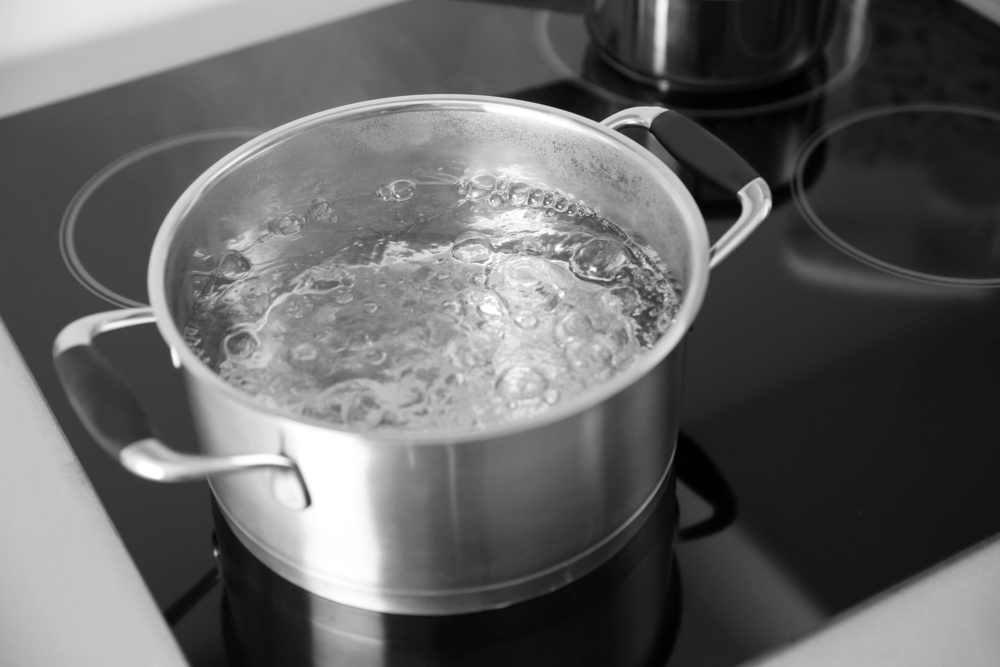Before You Begin Sterilizing
- Wash your hands with soap and water.
- Wash countertops where bottles will be placed with soap and water.
- Wash all bottles, nipples, caps and rims with soap and water, then sterilize them.
- Use a sterilized bottle for each feeding.
How to Sterilize

Safety Tips
- When purchasing bottles, look for ones that are BPA free.
- Sterilize all your equipment for the entire time your child is receiving formula.
- It is safe to use home sterilizers that you can buy in the store but be sure to follow the manufacturer’s instructions.
- Some dishwashers do not get hot enough to sterilize bottles and other feeding equipment. If you use a dishwasher to sterilize, make sure the bottles are dishwasher safe. Use the hottest water setting and heated drying cycle (or sterilization setting). Take apart the nipple, collar and bottle. Place bottles on the top rack and loose items in a dishwasher basket or laundry mesh bag.
- Automatic formula preparation machines for use at home are not recommended. Bacteria
can grow in the water if it sits too long in the machine and the water in these units is not
hot enough to kill the bacteria that may be in the powdered formula. These machines are also difficult to clean properly.
If you have questions about how to feed your baby, call your local public health nurse, nursing station, health centre, knowledge keeper or health-care provider, or call Health Links- Info Santé at 204-788-8200 or toll-free 1-888-315-9257.


